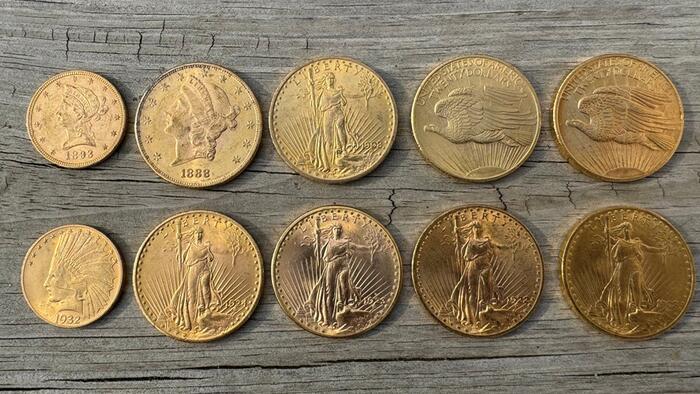The Allure of Classic American Coins
Gold and silver investment often begins with modern bullion coins, such as the American Gold and Silver Eagles from the U.S. Mint. This simple approach to investing is popular due to its practicality, and it marks the starting point for many investors, including myself. However, my exploration of the historical roots of American coinage revealed a fascinating legacy—classic American gold and silver coins that were minted for everyday circulation. These coins carry not only aesthetic beauty but also significant historical context, connecting investors to a time when the U.S. dollar was based on precious metals. This article aims to illuminate the profound benefits of investing in these classic coins, celebrating their artistry and historical significance while highlighting their appeal as investment options.
The foundation for the United States’ monetary system was laid with the Coinage Act of 1792, which established the U.S. dollar as the primary unit of currency and created the United States Mint. Among its various provisions, the Act designated the silver dollar as lawful tender and introduced several gold coins to facilitate a stable economic system. Over the years, particularly from 1795 to 1933, gold coins were produced for public use, primarily appealing to the wealthy for purposes like savings and significant transactions. While silver coins featured more prominently in daily exchanges, gold coins, due to their high value, were often stored in banks rather than circulating in the economy. This historical context makes pre-1933 gold coins worthy of attention, as they remain relatively well-preserved, with many collectibles graded as Brilliant Uncirculated.
Despite the perception that pre-1933 gold coins might be rare or out of reach financially, many are surprisingly accessible. Reputable bullion dealers offer these timeless artifacts for acquisition at premiums similar to, or even lower than, contemporary bullion coins. Many common-year $20 double eagles from the late 19th and early 20th centuries present the best investment opportunity for those seeking historical significance without the hefty premiums often associated with rarer coins. For instance, a Brilliant Uncirculated $20 Saint-Gaudens double eagle can be acquired at a modest premium compared to the popular modern 1 oz American gold eagle. This price efficiency makes it feasible and desirable to include historic coins in one’s portfolio, enriching both the investment experience and appreciation for American history.
In addition to gold, classic American silver coins minted for everyday circulation between 1794 and 1970 present another investing avenue. Often categorized as "junk silver," these coins, made from 90% silver, provide an effective means to invest in silver without the higher premiums attached to numismatic pieces. My preference leans towards common-date silver dimes, quarters, and half-dollars from the mid-20th century due to their affordability and intrinsic value. Collectors and investors alike find joy in the tactile experience of handling these silver coins, which exude a tangible history of economic transactions. Unlike modern bullion, which feels sterile, these vintage coins invite closer inspection and appreciation thanks to their story-laden past.
Modern financial policies have systematically undermined the purchasing power of the U.S. dollar, especially since the establishment of the Federal Reserve in 1913, leading to troubling inflation and devaluation. Historical context reveals that the dollar lost half of its purchasing power within six years of the Federal Reserve’s inception, exacerbating an unfavorable trend for future generations. Significant events, such as President Franklin D. Roosevelt’s decision to abandon the Gold Standard in 1933 and the decision to remove silver from everyday coins in 1965, showcase the increasing detachment of currency from its intrinsic value. These shifts have resulted in the gravitation towards assets like gold and silver as investment vehicles, preserving wealth in a world of currency debasement.
The dynamics of inflation can often mask the underlying issues related to currency devaluation. Milton Friedman’s assertion that “inflation is always and everywhere a monetary phenomenon” remains pertinent, illustrating that the core issue lies in the expansion of the money supply rather than specific increases in commodity prices. The charts documenting the staggering increases in monetary supply clearly indicate a correlation to historic inflation rates, thereby reinforcing the role of gold as a hedge against such financial phenomena. As numerous fiat currencies face similar crises, the trend towards inflation points towards a need for investing in precious metals that have historically proven to hold their value when paper currencies falter.
In conclusion, classic American gold and silver coins stimulate a bittersweet nostalgia; they are iconic representations of a bygone era defined by tangible currency backed by precious metals. While modern investment often focuses on the practicality of bullion, there remains a uniquely profound experience in engaging with historical currency. These coins not only serve as a financial investment but as artifacts that remind us of the importance of economic integrity and sound money. Such connections can enrich an investor’s journey into precious metals, revealing the historical resonance that accompanies each piece. As I continue to explore and celebrate these classic coins, I encourage others to discover the unique joy and value they carry, both financially and as tangible pieces of American history.

